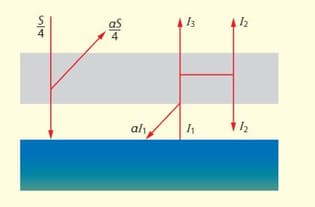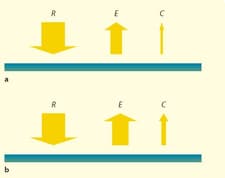K A Tsokos Solutions for Chapter: Energy Production, Exercise 2: Test yourself
K A Tsokos Physics Solutions for Exercise - K A Tsokos Solutions for Chapter: Energy Production, Exercise 2: Test yourself
Attempt the practice questions on Chapter 8: Energy Production, Exercise 2: Test yourself with hints and solutions to strengthen your understanding. Physics for the IB Diploma 6th Edition solutions are prepared by Experienced Embibe Experts.
Questions from K A Tsokos Solutions for Chapter: Energy Production, Exercise 2: Test yourself with Hints & Solutions
The diagram shows a more involved model of the greenhouse effect.
The average incoming radiation intensity . The albedo of the atmosphere is . Assume that the fraction of the energy radiated by the earth actually escapes the earth and the surface behaves as a black body. The model assumes that part of the radiation from the earth is reflected back down from the atmosphere.
Calculate the temperature of the atmosphere.
Given and and ,
Outline the main ways in which the surface of the earth loses thermal energy to the atmosphere and to the space.
Compare the albedo of subtropical,warm, dry land with that of a tropical ocean.
Suggest mechanism through which sub tropical land and tropical ocean lose thermal energy to the atmosphere.
If sea level was to increase,seawater would cover dry land.Suggest one change in regional climate that come about as aresult.
Evaporation is a method of thermal energy loss. Explain whether you would expect this method to be more significant for atropical ocean or an arctic ocean.
The diagram shows two energy flow diagrams for thermal energy to and from specific areas of the surface of the earth. R represents net energy incident on the surface in the form of radiation,E is the thermal energy lost from the earth due to evaporation and C is the thermal energy conducted to the atmosphere because of the temperature difference between the surface and the atmosphere.Suggest whether the Earth area in each diagram is likely to be dry and cool or moist and warm.
It is estimated that the change of albedo by will result in a temperature change.A large area of the earth consists of water and land.Calculate the expected change in temperature (in degree Celsius) if melting ice causes a change in the proportion of the area covered by water from .Take the albedo of dry land to be and that of water to be


